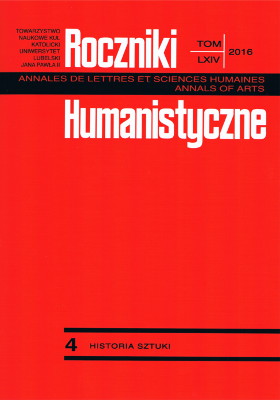Santoral hispalense en la pintura sevillana del siglo XVII
Saint Patrons of the Capital of Andalusia in the Sevillian Painting of the 17th Century
Author(s): Andrzej WitkoSubject(s): Fine Arts / Performing Arts, Visual Arts
Published by: Towarzystwo Naukowe KUL & Katolicki Uniwersytet Lubelski Jana Pawła II
Keywords: Spain; painting; Seville; XVII in.; St. Ferdinand; St. Hermenegild; St. Isidore; St. Justa; St. Laureano; St. Leander; St. Rufina
Summary/Abstract: The Sevillian painting keeps fascinating both expert researchers and modest art lovers, and it keeps attracting their attention. Artists working in the capital of Andalusia in the 17th century were able to illustrate the truths of the faith according to the recommendations of the Council of Trent in an exceptional way, like few other schools. They introduced an original iconographical language with an exceptional spiritual foundation, often creating their works with no patterns. Excellent compositions manifesting a brilliant skill of observing the life, a sophisticated technique, and a rich palette of colors make the supernatural reality that is shown seem to be a full of simplicity worldly reality. Presentations of the inanimate nature make it transcendent and poetical. Saint martyrs and confessors, in a heroic act of faith or in mystic ecstasies, are real figures, actually touching the mundane world, devoid of the baroque exaggeration that is present especially in Italian painting.In the Sevillian painting of the 17th century presentations of saint patrons of the capital of Andalusia played a significant role. Two sisters-martyrs of the 3rd century were particularly worshipped – Saints Justa and Rufina coming from a family of potters; so was St Laurean, a bishop-martyr of the 6th century; and St Hermenegild, the son of king Liuvigild, also murdered in the 6th century on the orders of his father who was an Arian. Also pictures of outstanding pastors of the Seville Church who lived at the end of the 6th century were very popular – pictures of two brothers, St Leander of Seville and St Isidore of Seville, the last of the Fathers of the Church. Only in the second half of the 17th century did the images of King Ferdinand III of Castile become popular; the King who liberated Seville that had belonged to the Islamic state.
Journal: Roczniki Humanistyczne
- Issue Year: 64/2016
- Issue No: 4
- Page Range: 85-114
- Page Count: 30
- Language: Polish, Spanish

